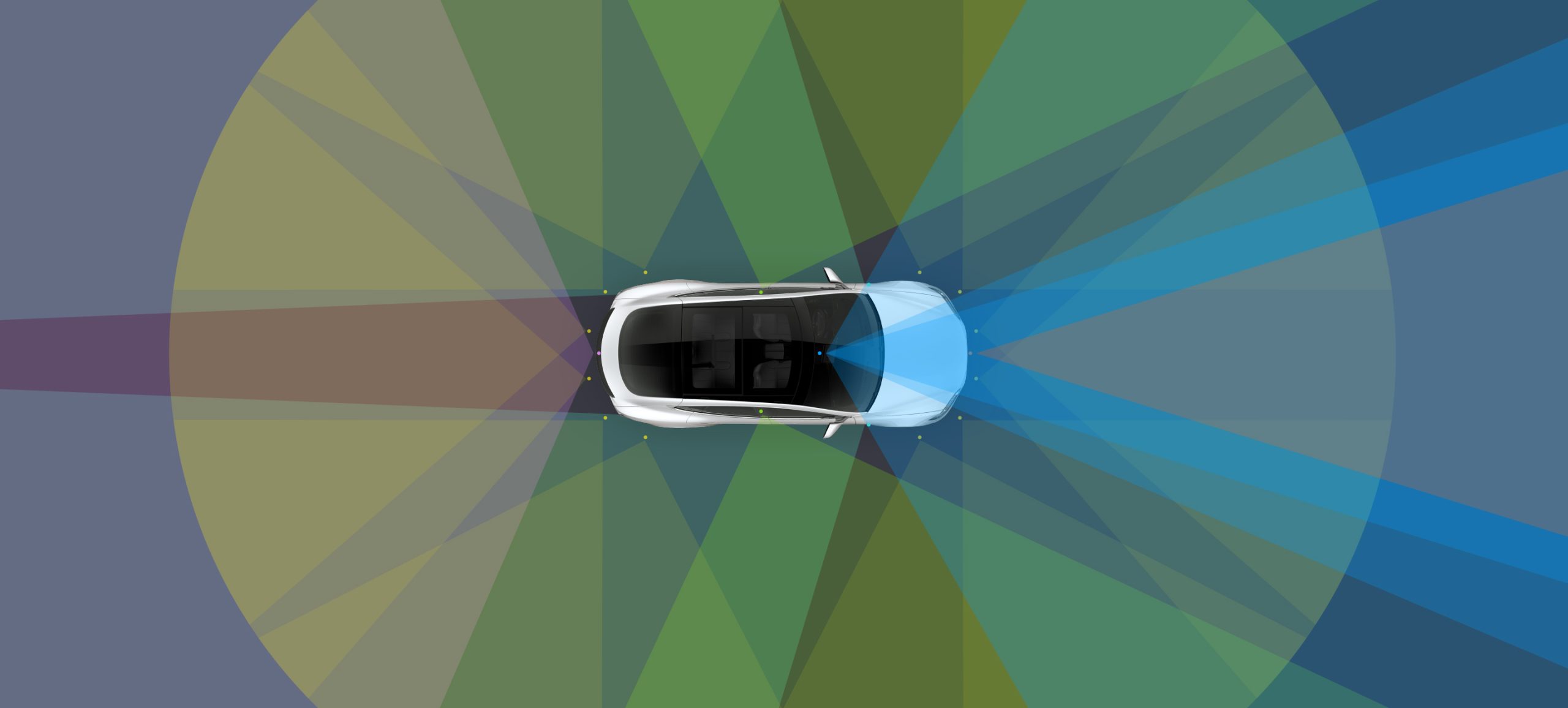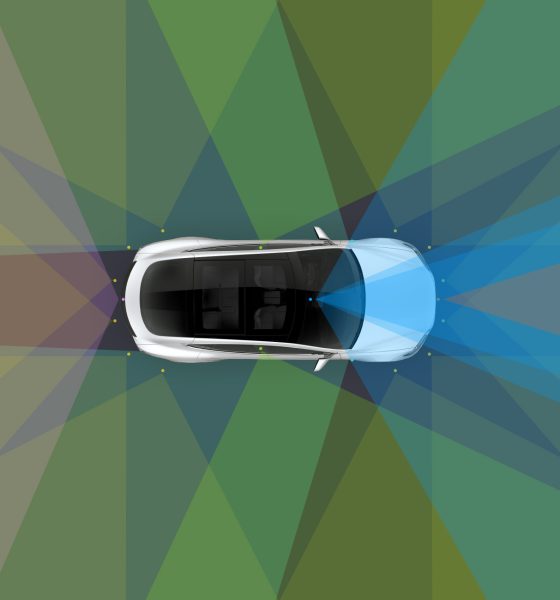

News
Tesla’s newest Autopilot Vision head: Who is Andrej Karpathy?
The EV world was rocked when it was announced that Tesla replaced its Vice President of Autopilot Software, Chris Lattner, with Andrej Karpathy. Karpathy is the company’s new Director of AI and Autopilot Vision, but who he is?
Karpathy most recently worked as a research scientist with Elon Musk’s OpenAI, specializing in deep neural networks.
He also had three summer stints at Google. In 2011 and 2013, Karpathy interned for the tech behemoth working on large scale deep learning and video content analysis. In 2015, he was with Google DeepMind, focusing on deep reinforcement learning.
In 2009, Karpathy graduated from University of Toronto with a Bachelor’s of Science in computer science and in physics. From there, he went to the University of British Columbia and got Master’s Degree in computer science and researched motor control, primarily learning controllers for physically simulated figures.
After finishing graduate school in 2011, Karpathy went to Stanford University to pursue a Ph.D in computer science. He researched machine learning, with an emphasis on deep learning for computer vision and natural language processing. He worked under adviser Fei-Fei Li, the director of Stanford’s AI lab and chief director of Google Cloud. According to his Stanford profile, Karpathy graduated in 2015 before jumping to Google DeepMind and eventually OpenAI.
Karpathy has been published in scholarly journals and for conferences, including the International Conference on Learning Representations. He also published a couple of blogs to keep his followers posted on research development and a lighter one on topics such as a survival guide to a Ph.D.
In February of this year he joined the steering committee of distill.pub, a journal focusing on machine learning research.
Karpathy will report directly to Musk, and work closely with chip expert and Vice President of Autopilot Hardware Jim Keller on advancing Tesla’s self-driving technology.
Tesla released the following statement regarding the hiring of Karpathy:
Andrej Karpathy, one of the world’s leading experts in computer vision and deep learning, is joining Tesla as Director of AI and Autopilot Vision, reporting directly to Elon Musk. Andrej has worked to give computers vision through his work on ImageNet, as well as imagination through the development of generative models, and the ability to navigate the internet with reinforcement learning. He was most recently a Research Scientist at OpenAI.
Andrej completed his computer vision PhD at Stanford University, where he demonstrated the ability to derive complex descriptions of images using a deep neural net. For example, identifying not simply that there is a cat in a given picture, but that it is an orange, spotted cat, riding on a skateboard with red wheels on brown hardwood flooring (http://cs.stanford.edu/people/karpathy/main.pdf). He also created and taught “Convolutional Neural Networks for Visual Recognition,” the first and still leading deep learning course at Stanford.
Andrej will work closely with Jim Keller, who now has overall responsibility for Autopilot hardware and software.
To see Karpathy in action discussing deep learning, check him out here:

News
Tesla FSD fleet is nearing 7 billion total miles, including 2.5 billion city miles
As can be seen on Tesla’s official FSD webpage, vehicles equipped with the system have now navigated over 6.99 billion miles.

Tesla’s Full Self-Driving (Supervised) fleet is closing in on almost 7 billion total miles driven, as per data posted by the company on its official FSD webpage.
These figures hint at the massive scale of data fueling Tesla’s rapid FSD improvements, which have been quite notable as of late.
FSD mileage milestones
As can be seen on Tesla’s official FSD webpage, vehicles equipped with the system have now navigated over 6.99 billion miles. Tesla owner and avid FSD tester Whole Mars Catalog also shared a screenshot indicating that from the nearly 7 billion miles traveled by the FSD fleet, more than 2.5 billion miles were driven inside cities.
City miles are particularly valuable for complex urban scenarios like unprotected turns, pedestrian interactions, and traffic lights. This is also the difference-maker for FSD, as only complex solutions, such as Waymo’s self-driving taxis, operate similarly on inner-city streets. And even then, incidents such as the San Francisco blackouts have proven challenging for sensor-rich vehicles like Waymos.
Tesla’s data edge
Tesla has a number of advantages in the autonomous vehicle sector, one of which is the size of its fleet and the number of vehicles training FSD on real-world roads. Tesla’s nearly 7 billion FSD miles then allow the company to roll out updates that make its vehicles behave like they are being driven by experienced drivers, even if they are operating on their own.
So notable are Tesla’s improvements to FSD that NVIDIA Director of Robotics Jim Fan, after experiencing FSD v14, noted that the system is the first AI that passes what he described as a “Physical Turing Test.”
“Despite knowing exactly how robot learning works, I still find it magical watching the steering wheel turn by itself. First it feels surreal, next it becomes routine. Then, like the smartphone, taking it away actively hurts. This is how humanity gets rewired and glued to god-like technologies,” Fan wrote in a post on X.
News
Tesla starts showing how FSD will change lives in Europe
Local officials tested the system on narrow country roads and were impressed by FSD’s smooth, human-like driving, with some calling the service a game-changer for everyday life in areas that are far from urban centers.

Tesla has launched Europe’s first public shuttle service using Full Self-Driving (Supervised) in the rural Eifelkreis Bitburg-Prüm region of Germany, demonstrating how the technology can restore independence and mobility for people who struggle with limited transport options.
Local officials tested the system on narrow country roads and were impressed by FSD’s smooth, human-like driving, with some calling the service a game-changer for everyday life in areas that are far from urban centers.
Officials see real impact on rural residents
Arzfeld Mayor Johannes Kuhl and District Administrator Andreas Kruppert personally tested the Tesla shuttle service. This allowed them to see just how well FSD navigated winding lanes and rural roads confidently. Kruppert said, “Autonomous driving sounds like science fiction to many, but we simply see here that it works totally well in rural regions too.” Kuhl, for his part, also noted that FSD “feels like a very experienced driver.”
The pilot complements the area’s “Citizen Bus” program, which provides on-demand rides for elderly residents who can no longer drive themselves. Tesla Europe shared a video of a demonstration of the service, highlighting how FSD gives people their freedom back, even in places where public transport is not as prevalent.
What the Ministry for Economic Affairs and Transport says
Rhineland-Palatinate’s Minister Daniela Schmitt supported the project, praising the collaboration that made this “first of its kind in Europe” possible. As per the ministry, the rural rollout for the service shows FSD’s potential beyond major cities, and it delivers tangible benefits like grocery runs, doctor visits, and social connections for isolated residents.
“Reliable and flexible mobility is especially vital in rural areas. With the launch of a shuttle service using self-driving vehicles (FSD supervised) by Tesla in the Eifelkreis Bitburg-Prüm, an innovative pilot project is now getting underway that complements local community bus services. It is the first project of its kind in Europe.
“The result is a real gain for rural mobility: greater accessibility, more flexibility and tangible benefits for everyday life. A strong signal for innovation, cooperation and future-oriented mobility beyond urban centers,” the ministry wrote in a LinkedIn post.
News
Tesla China quietly posts Robotaxi-related job listing
Tesla China is currently seeking a Low Voltage Electrical Engineer to work on circuit board design for the company’s autonomous vehicles.

Tesla has posted a new job listing in Shanghai explicitly tied to its Robotaxi program, fueling speculation that the company is preparing to launch its dedicated autonomous ride-hailing service in China.
As noted in the listing, Tesla China is currently seeking a Low Voltage Electrical Engineer to work on circuit board design for the company’s autonomous vehicles.
Robotaxi-specific role
The listing, which was shared on social media platform X by industry watcher @tslaming, suggested that Tesla China is looking to fill the role urgently. The job listing itself specifically mentions that the person hired for the role will be working on the Low Voltage Hardware team, which would design the circuit boards that would serve as the nervous system of the Robotaxi.
Key tasks for the role, as indicated in the job listing, include collaboration with PCB layout, firmware, mechanical, program management, and validation teams, among other responsibilities. The role is based in Shanghai.
China Robotaxi launch
China represents a massive potential market for robotaxis, with its dense urban centers and supportive policies in select cities. Tesla has limited permission to roll out FSD in the country, though despite this, its vehicles have been hailed as among the best in the market when it comes to autonomous features. So far, at least, it appears that China supports Tesla’s FSD and Robotaxi rollout.
This was hinted at in November, when Tesla brought the Cybercab to the 8th China International Import Expo (CIIE) in Shanghai, marking the first time that the autonomous two-seater was brought to the Asia-Pacific region. The vehicle, despite not having a release date in China, received a significant amount of interest among the event’s attendees.








